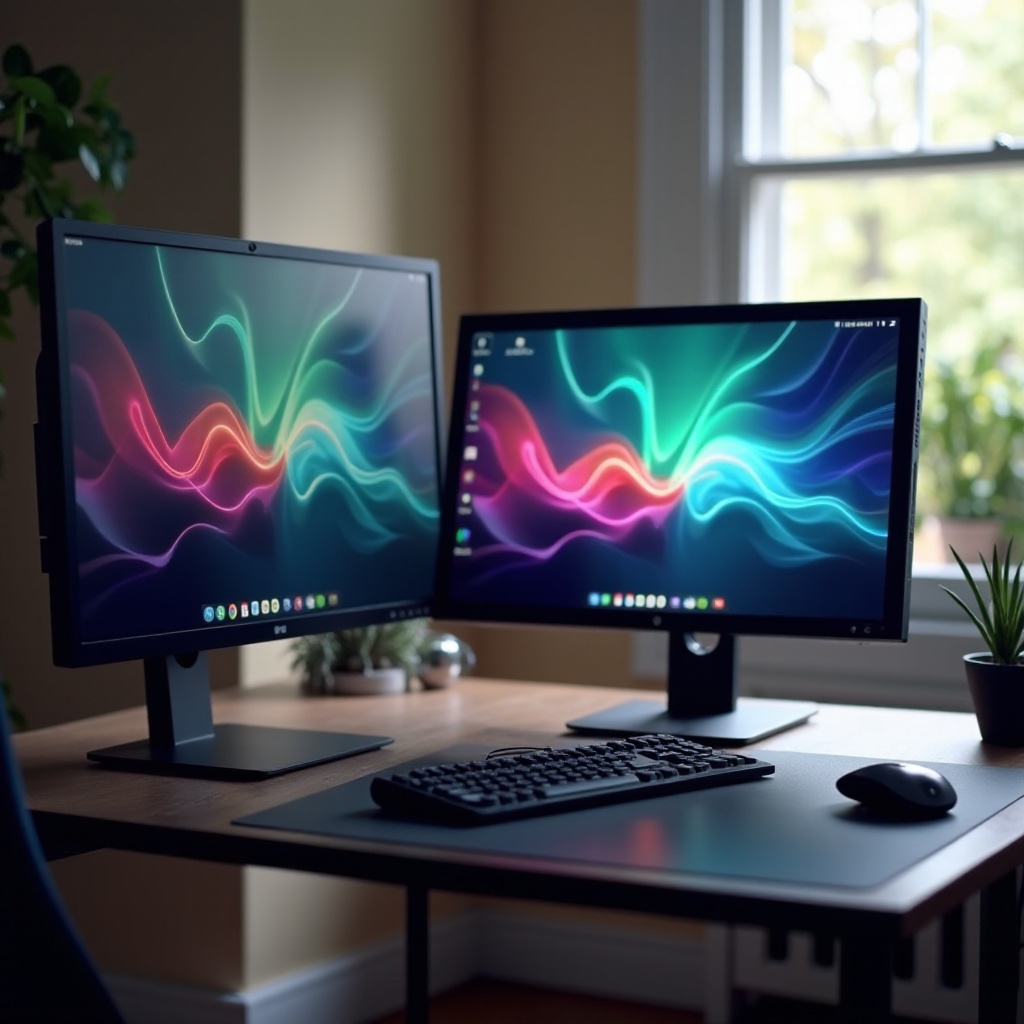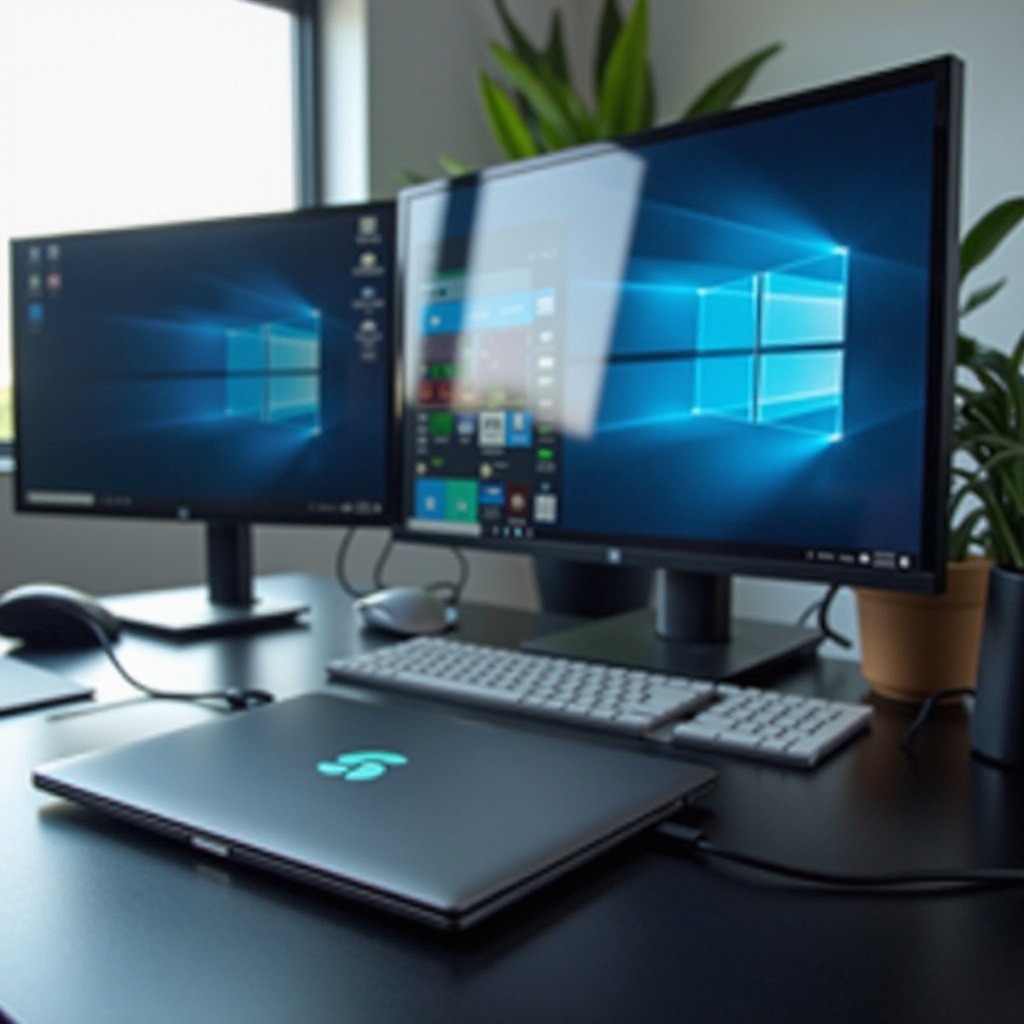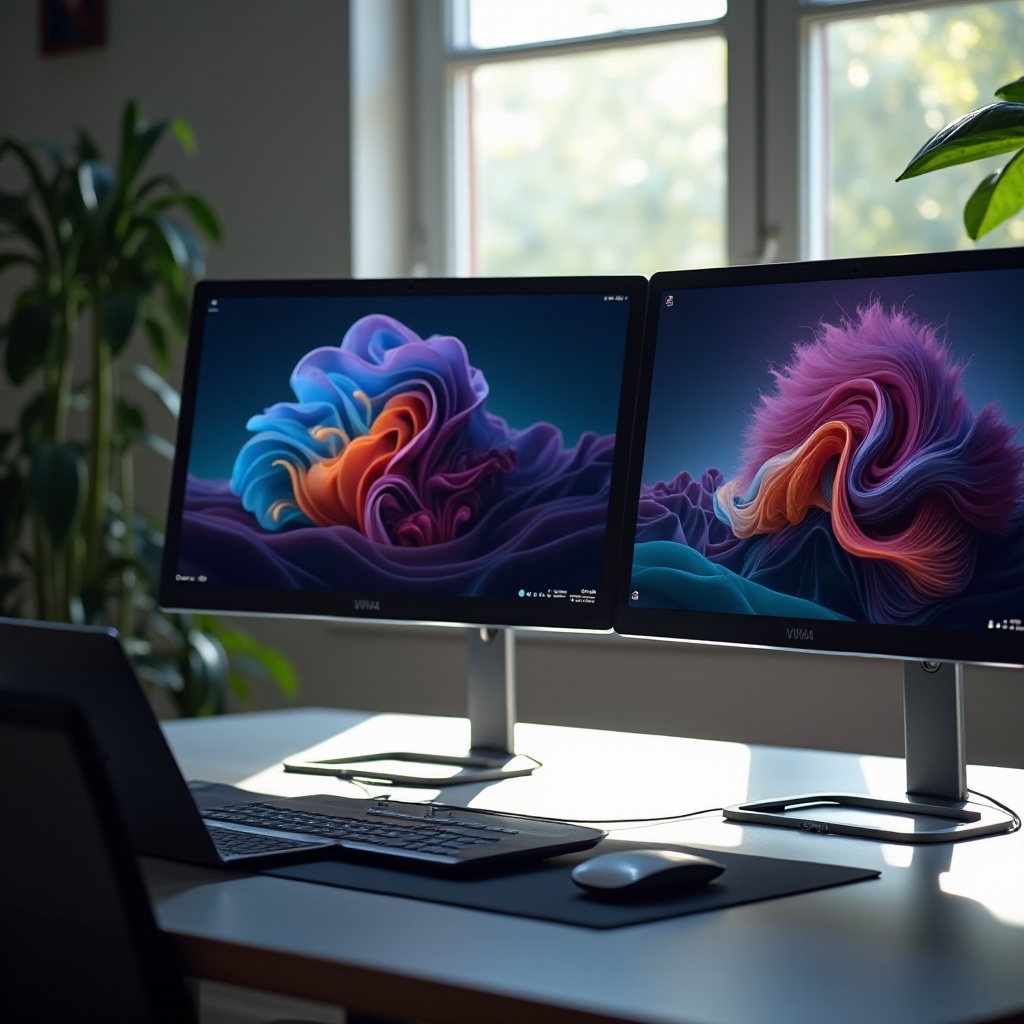Introduction
Closing your PC but want your monitors to stay on? This is a common quest for those looking to run multiple tasks on external displays without obstructing their workflow. Whether you’re an avid multitasker, a graphic designer, or simply prefer a larger screen, learning how to close your PC and keep your monitors running is a game-changer. This guide walks you through the steps to ensure your external monitors remain operational while your PC is closed.

Understanding Power Settings
To ensure your monitors remain active after closing your PC, it’s essential to understand how power settings work. Both Windows and macOS have built-in features that allow users to customize power settings.
Power settings determine how your system behaves when you close the lid of your laptop. These settings can keep your computer on, put it in sleep mode, or completely shut it down. By configuring these settings appropriately, you can make certain your external monitors stay on while your laptop lid is closed.

Configuring Your PC to Keep Monitors On
To keep your monitors running after closing your PC, follow these steps for both Windows and macOS.
Configuring Power Settings on Windows
- Access Power Options:
- Click on the Start Menu and type ‘Control Panel.
-
In the Control Panel, go to ‘Hardware and Sound’ and then ‘Power Options.
-
Modify Power Button and Lid Settings:
- Click on ‘Choose what closing the lid does’ from the list on the left.
- You’ll see options for ‘When I close the lid’ under both ‘On battery’ and ‘Plugged in’ categories.
-
Select ‘Do nothing’ for both options.
-
Save Changes:
- Click ‘Save changes’ to apply the settings.
Your external monitors should now remain operational when you close your PC lid.
Configuring Power Settings on macOS
- Open System Preferences:
- Click on the Apple icon on the top left corner and choose ‘System Preferences.
-
Select ‘Energy Saver’ or ‘Battery.
-
Adjust Display and Lid Settings:
- For MacBooks, click on ‘Power Adapter’ and ensure ‘Prevent your Mac from automatically sleeping when the display is off’ is checked.
-
Uncheck the option ‘Put hard disks to sleep when possible.
-
Save Settings:
- Close the window to save settings automatically.
With these configurations, your external monitors will remain on even when you close your MacBook.
Using Docking Stations and Hardware Solutions
Docking stations and hardware solutions can significantly enhance your dual-monitor setup. They provide multiple ports for additional monitors and accessories, improving the overall productivity of your workstation.
- Choose the Right Docking Station:
- Ensure that the docking station supports your laptop model and meets your connectivity needs.
-
Look for features like multiple monitor support, additional USB ports, and power delivery.
-
Set Up External Hardware:
- Connect your laptop to the docking station.
- Attach your external monitors, keyboard, and mouse to the docking station.
- Usually, these stations come with software or drivers; install them to maximize compatibility.
These steps not only keep your monitors running but also provide a seamless transition from working with the laptop to a full workstation setup.
Optimizing Your Dual-Monitor Experience
Once your monitors are set to stay on with the lid closed, you can optimize the experience for better productivity and comfort.
- Adjust Screen Resolution:
- Go to your system’s display settings to match resolutions.
-
Ensure both monitors have the same resolution for a seamless experience.
-
Customize Display Settings:
- Arrange your monitors as required. Position one monitor above/below or side by side as per your workflow.
- On Windows, you can do this in the ‘Display settings’ under ‘System.
-
On macOS, go to ‘Displays’ in ‘System Preferences’ and drag monitors to arrange.
-
Manage Applications:
- Use software like DisplayFusion for Windows or Magnet for macOS to manage your applications and windows layout on multiple monitors.
Optimizing these settings ensures you get maximum efficiency from your dual-monitor setup.

Troubleshooting Common Issues
Sometimes, even after the correct setup, you may face issues with monitors turning off. Here’s what you can do:
- Monitor Not Turning On with Laptop Lid Closed:
- Re-check power settings in the control panel or system preferences.
-
Ensure the monitors are correctly connected and powered.
-
Monitors Go Black After Closing Lid:
- Update graphic drivers.
- Check for any available system updates.
- Try using your hardware on another system to rule out hardware malfunction.
Resolving these issues will ensure that your stay-on settings are reliably active.
Conclusion
Successfully configuring your PC to keep monitors running with the lid closed can significantly enhance your workspace. By understanding power settings, configuring those settings correctly, using docking stations, and optimizing your external monitor configurations, you can achieve a more productive and less cluttered working environment.
Frequently Asked Questions
Can closing my laptop lid damage my external monitors?
Closing your laptop lid does not typically damage external monitors. However, it is crucial to follow proper steps to ensure your laptop remains in a ‘do nothing’ state instead of sleeping or shutting down.
Why are my monitors not turning on when I close my laptop?
If your monitors are not turning on, re-check your power settings. Ensure external monitors are securely connected and powered. Additionally, check your system’s graphics settings and drivers.
What should I do if my monitors go black after closing the lid?
First, verify your power settings to ensure they are configured correctly. Update your graphic drivers and check for system updates. If the problem persists, test your hardware setup with another PC to rule out any hardware issues.